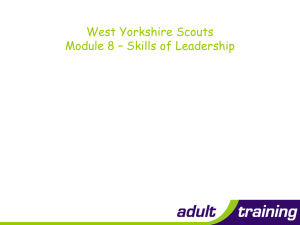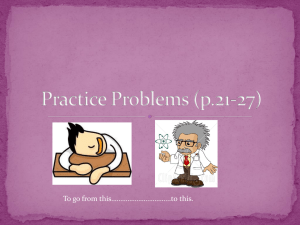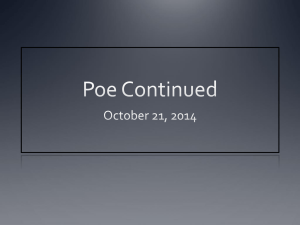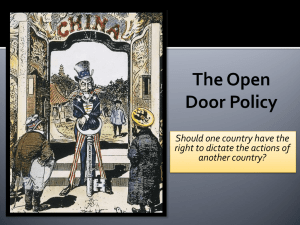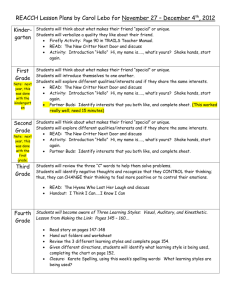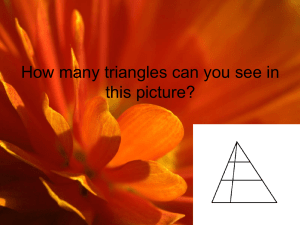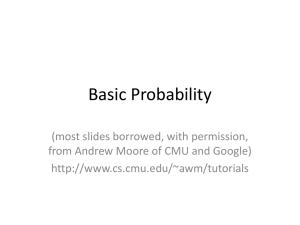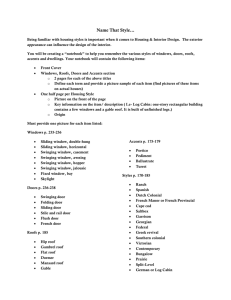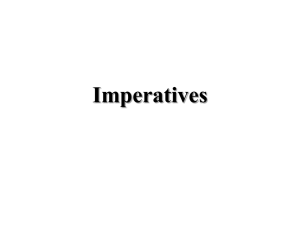Module 8: Skills of Leadership
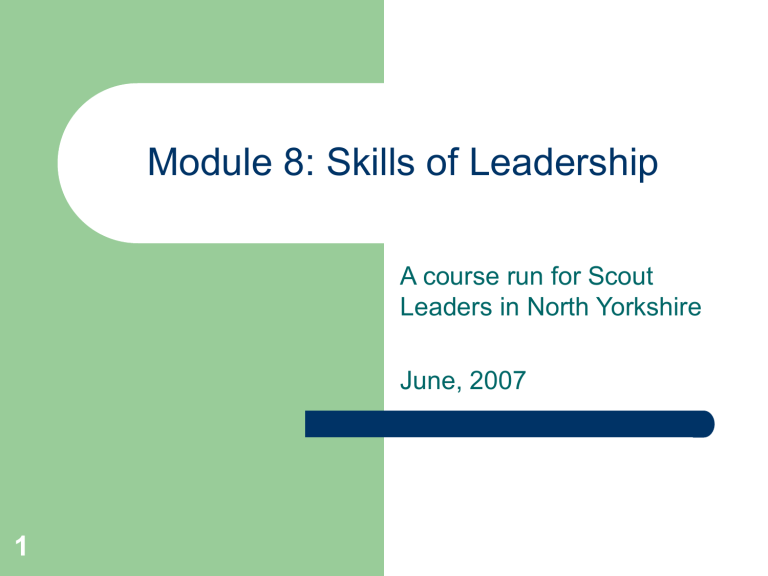
1
Module 8: Skills of Leadership
A course run for Scout
Leaders in North Yorkshire
June, 2007
2
Introduction: aim of the course
To cover the knowledge, skills and attitudes required to become a more effective leader
3
Introduction: objectives
Describe and discuss a systematic approach to planning
Apply systematic planning to any future activity
Analyse the functions of leadership in terms of:
- the task to be done and actions to assist it
- actions to assist group cohesion
- actions to meet individual needs
Recognise leadership roles being exercised in the group and how the leadership function may be shared and passed between the members of the group
Identify a range of leadership styles and situations
Identify one’s own preferred style of operation
Identify how leadership skills of adults and young people may be developed
4
Summary of pre-course tasks
Prepare a short talk/presentation telling the group about an activity/event/meeting that you organised, focusing on the planning aspect, and the success or otherwise, of the event
Be prepared to share your ideas on leadership with the group.
What sort of leader do you think you are? Do you think you are an
effective leader? What type of leadership do you prefer in others when you are not the leader in a given situation?
Bring to the course ONE good idea for developing leadership skills, either in adults or in the young people in your Scout section
5
Planning and Leadership
Why should we plan?
Complete the definition:
“Planning is a way of…………….”
Is there ever a case for not planning something for which we are responsible as leader?
Planning and Leadership - DOOR
6
Decide
Organise
Operate
Review
Planning and Leadership - DOOR
7
Decide
What is needed
What you want to achieve
When it is required
8
Planning and Leadership - DOOR
Organise
“ARTS”
Activity
Resources
Timescale
Skills
9
Planning and Leadership - DOOR
Operate
Do it!!
Planning and Leadership - DOOR
10
Review
Did you reach your goal?
How well did it go?
What could you learn for the future?
What is the next DOOR?
11
Planning and Leadership
Task (1)
Presentations by members of the group
(pre-course preparation: task 1)
12
Planning and Leadership
Task (2)
You have 15 minutes in which to plan a Scout section summer troop night activity on the local canal: open canoeing (14 Scouts, 6 canoes, 3 qualified leaders).
Complete the D, O, and R elements of DOOR
13
Planning and Leadership: the “actioncentred leadership” model
The Task
What is it?
How is it to be achieved?
Is there an “objective”?
How detailed does the planning need to be?
Is there provision for monitoring/modifying the plan?
Does a review take place?
14
Planning and Leadership: the “actioncentred leadership” model
The Group
“Ownership” of the activity
Group participation in planning
Shared direction
Team work – all involved/motivated?
Co-ordination
Encouragement
15
Planning and Leadership: the “actioncentred leadership” model
The Individual
Awareness of role and responsibility
Understanding of nature of task/activity
Feeling of being “supported”
Special needs accommodated
Possibility of progress/development
16
Planning and Leadership: the “actioncentred leadership” model
Task (3)
As a group, reflect on the canoeing activity planning exercise you have just completed in terms of the above model
Did you take account of task, group, and individual?
Can you identify any “shortcomings”?
17
Planning and Leadership: possible leadership styles
Telling (directive) - based on instruction/supervision
Selling (persuading) – as above, but with explanation of reasons, welcoming suggestions + support
Sharing (consultation) – suggestion-based; some experimentation welcomed
Delegation – responsibility for decisions passed to others while leader continues to “monitor" (and could intervene)
Try to relate the above choice of “style” to the ability of the group and its degree of motivation
18
Leadership Styles
Task (4)
(group discussion)
Be prepared to share your ideas on leadership with the group. What sort of leader do you think you are? Do you feel you are an effective leader?
What type of leadership do you prefer in others when you are not the leader in a given situation?
In what areas, if any, do you think you might need to develop as a leader?
19
Leadership Skills
Task (5)
Course members are invited to share with the group good ideas for developing leadership skills, either in adults or in the young people in their
Scout sections
20
Leadership Skills
Task (6)
In a leadership training exercise, it is imagined that a member of a walking group falls and is seriously injured. There is a need to apply an arm sling, support a broken leg, monitor consciousness, and get help.
Use the 4 “styles of leadership” to demonstrate how this might work out in practice. This requires 4 members of our group here on the course to “lead” either by giving precise directions; or using persuasive methods; or applying consultation techniques; or by using a high degree of delegation.
21
Reviewer briefing
Did the group achieve the task?
Did the leader watch the group, evaluate and take appropriate action?
Was leadership shared with the group?
Were any resources fully used?
Was the group co-ordinated to ensure successful working together?
Was there good communication?
Were individuals helped and supported?
What leadership style was used, and how effective was it?




